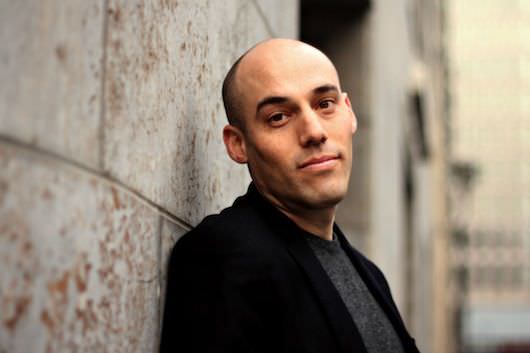Joshua Oppenheimer on Chatty Killers in his Oscar Nom’d Doc The Act of Killing
When filmmaker Joshua Oppenheimer set out to document the aftermath of what he calls “one of the biggest killings in human history,” he started with the survivors.
But it is the killers who speak in his Oscar-nominated documentary The Act of Killing, a film that reinterprets the documentary.

“Documentary implies that we’re documenting a pre-existing reality, and I think we never are in nonfiction; we’re always creating reality with the people we film,” Oppenheimer told The Credits. “It’s our job to create whatever reality that offers the most insight into the most urgent questions that we’re confronting.”
An estimated 500,000 people were killed in Indonesia between 1965-66 (some estimates put the total number killed at 2.5 million), part of an authoritarian response to an attempted government coup, so the victims are not hard to find. Oppenheimer stumbled across some of them while making a documentary about plantation workers attempting to unionize in 2001.
“I had the feeling I had wondered into Germany 30 years after the Holocaust only to find the Nazis still in power,” Oppenheimer explained.
But making a film under those conditions isn’t easy. “The Army found out what we were doing and would no longer let the survivors participate in the film,” Oppenheimer said. “It was the survivors themselves who suggested, look, before you quit and give up and go home, try and film the perpetrators.”
The killers were just as easy to find, since they retain power in the country. Oppenheimer initially approached them cautiously, but “found to my horror that every single one of them was immediately boastful about the killings, often with smiles on their faces, often in front of their wives and their children and even their small grandchildren.”
“Pretty much everybody was willing to talk to me,” Oppenheimer said. “Sometimes people assume it was some kind of lure, because it’s unusual, some kind of lure or trick to get them to open up. On the contrary: it wasn’t, it was a response to their openness, trying to analyze why are these men so open, for whom are they boasting, why are they boasting, what are the effects of this boasting on this society?”
Two years into the process, Oppenheimer interviewed his 41st perpetrator, Anwar Congo. Congo quickly became the focal point of the movie when he invited Oppenheimer to a rooftop, during their first meeting, and demonstrated how he used a length of wire to perform many of the 1,000 kills credited to him.
“He said, ‘I’ve been singing and going out dancing all my life to forget what I’ve done, it haunts me,’ and then he starts to dance,” Oppenheimer recalled. “I thought, ‘Ah ha, these men know what they did is wrong.’ And they’re boasting in part to convince themselves that what they did was glorious so they can live with themselves. And they’re horribly imposing that view on the other side with the force of a threat.”
Oppenheimer allowed the killers to present their stories however they wished—with most of the killers volunteering to demonstrate, almost as performance art, their grisly acts—with the caveat that he would also film them discussing among themselves the things they chose to leave out.
Oppenheimer wanted to do more than document reality in The Act of Killing; he wanted to understand it. In one key scene, Congo suggests that reenacting the killings allows him to feel what his victims felt. From off-screen, Oppenheimer pushes Congo to consider how much more terrifying it would be if he were not play-acting.
“I see the film as an intervention,” Oppenheimer acknowledged. “I felt entrusted in a way by the survivors and the human rights community to do a work they surely could not do themselves.”
Oppenheimer stayed in communication with survivors and the Indonesian human rights community throughout the five-year shoot. He said it was puzzling that the Army knew he was working with the survivors while the perpetrators never acknowledged it.
Oppenheimer kept the survivors and perpetrators separate during the shoot, with the exception of one man who Oppenheimer said “slipped through the net.” The man tells his story to Congo in a powerfully uncomfortable scene in the movie, a conversation filmed by a member of Oppenheimer’s crew who did not speak Indonesian. Oppenheimer discovered it during editing.
“I feel terrible for that, although he wanted to be there and made the film stronger for being there,” Oppenheimer said.
Much of the film crew, some of them human rights workers, are credited anonymously because they remain in the country. Oppenheimer has said it is too dangerous for him to return, although he has enough footage to release a follow-up movie this year called The Look of Silence.
Oppenheimer edited 1,200 hours of footage into several versions of The Act of Killing for consumption in different countries, keeping in mind his goal to find a wider audience. He emphasized the need for U.S. audiences to realize their country allowed the killers to remain unpunished.
“I didn’t see [the film] as activism, per se, but I do see it not as a film about what happened in 1965, [but as] an expose about the regime that’s in place today,” he said. “Anyone, anywhere in the world who sees this, and certainly any Indonesian who sees this, will be forced to acknowledge the rotten heart of the regime built by killers and presided over by killers. Once the Indonesians are able finally to talk about their most painful problems without fear, then activism can start.”
Featured image: Some of the men Oppenheimer interviewed for The Act of Killing. Courtesy Drafthouse Films


